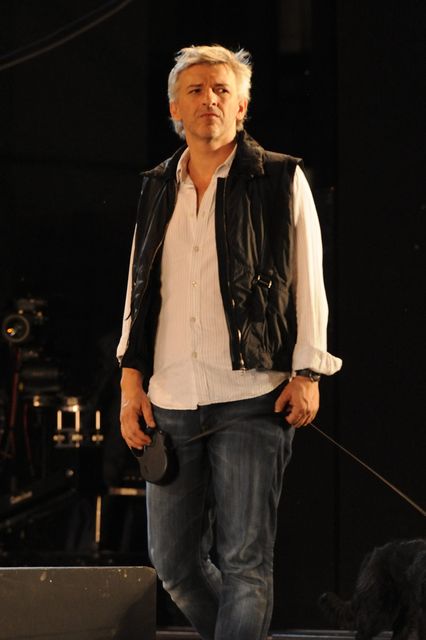13th-Century Construction Unearthed During Binnenhof Renovations

Table of Contents
The Significance of the Binnenhof Discovery
The Binnenhof holds immense historical importance as the seat of the Dutch government. For centuries, it has been the center of Dutch political power, witnessing pivotal moments in the nation's history. The discovery of well-preserved 13th-century construction beneath this significant location is exceptionally rare. Most structures from that period in The Hague have long since been replaced or heavily modified. This find, therefore, offers a unique opportunity to understand the city’s medieval past in unprecedented detail.
- Provides insights into urban planning in medieval The Hague: The layout and design of the unearthed structures can reveal details about the city's organization and development during the 13th century. This includes understanding street patterns, building density, and the overall urban fabric.
- Offers valuable information about building materials and construction methods: Analysis of the materials—the type of stone, wood, or brick used, along with the construction techniques employed—provides insights into the technology and resources available at the time. This can be compared to other contemporary structures across the Netherlands and Europe.
- Potentially reveals details about the lives of the people who built and inhabited the area: Artifacts found alongside the 13th-century construction, such as pottery shards, tools, and other remnants of daily life, can offer crucial information about the social and economic conditions of the medieval inhabitants.
- Could reshape our understanding of the Binnenhof's development: The discovery challenges existing narratives about the Binnenhof’s construction and evolution, potentially pushing back its origins and offering a more nuanced picture of its layered history. This will require further interdisciplinary research.
Details of the Unearthed 13th-Century Construction
The archaeological excavation has revealed significant remnants of 13th-century structures, including substantial sections of foundations, walls, and even parts of flooring. Preliminary analysis suggests the use of locally sourced brick and various types of stone, potentially indicating a mix of building techniques and materials reflecting the available resources of the time. Alongside the structural remains, archaeologists have unearthed a number of intriguing artifacts, including fragments of medieval pottery and various tools, providing further insights into daily life in medieval The Hague.
- Specific dimensions and layout of the discovered structures: Initial surveys suggest a complex layout, possibly indicating a series of interconnected buildings or workshops. Precise measurements and mapping are currently underway.
- Analysis of the building techniques used: Experts are examining the mortar, the way stones were fitted, and the overall construction methods used to determine the level of skill and organization involved.
- Dating methods employed to confirm the age of the construction: Radiocarbon dating and other techniques are being utilized to precisely determine the age of the materials and the structures, verifying their 13th-century origins.
- Comparison to other similar structures from the same period: The findings are being compared with other known 13th-century structures in The Hague and the Netherlands to identify similarities and differences in building styles and techniques.
The Impact of the Discovery on the Binnenhof Renovations
The discovery of the 13th-century construction has inevitably impacted the timeline and plans for the Binnenhof renovations. The project has been temporarily paused in the affected areas to allow for careful and thorough archaeological investigation. A collaborative effort between archaeologists, construction workers, and government officials ensures the preservation of the historical remains.
- Potential adjustments to the renovation plans: The renovation plans are likely to be adjusted to accommodate and protect the newly discovered archaeological site. Some areas may be redesigned to incorporate or showcase the historical finds.
- The role of archaeological experts in the project: A team of experienced archaeologists is leading the excavation and analysis of the findings, providing crucial expertise and ensuring the preservation of the site.
- Funding allocated for further archaeological investigation: Additional funding is being secured to support the ongoing investigation and long-term preservation of the 13th-century construction.
- Public engagement and educational opportunities related to the discovery: The government is planning to engage the public through exhibitions, tours, and online resources to share the excitement of this historical discovery.
Future Research and Public Access
Further research will focus on detailed analysis of the artifacts and structures, aiming to provide a comprehensive understanding of medieval life in The Hague. This research will involve interdisciplinary collaboration, combining expertise in archaeology, history, and architectural studies. The findings will be shared with the public through various channels.
- Details of planned archaeological studies: Advanced techniques such as 3D modeling and detailed material analysis will be employed to reconstruct the past environment and understand the use of these structures.
- Potential for future exhibitions showcasing the artifacts: Museums in The Hague are planning exhibitions to showcase selected artifacts and findings to the public.
- Opportunities for public tours and visits to the site (where possible): The government is exploring options to allow public access to the site, perhaps through guided tours and virtual reality experiences.
- Online resources and publications sharing the research findings: The research will be published in academic journals and made available to a wider audience through online platforms and websites.
Conclusion
The unexpected discovery of 13th-century construction during the Binnenhof renovations is a significant archaeological event, offering invaluable insights into the medieval history of The Hague and the development of this iconic political center. The careful excavation and subsequent research will undoubtedly reshape our understanding of the Binnenhof’s past. This remarkable find highlights the rich and often hidden layers of history beneath our modern cities.
Call to Action: Stay updated on the exciting developments of this unique archaeological find and the ongoing Binnenhof renovations. Follow our updates to learn more about the 13th-century construction unearthed in The Hague. Learn more about the ongoing investigation into this fascinating piece of Dutch history!

Featured Posts
-
 Basarnas Duga Balita Tenggelam Di Parit Batu Ampar Terbawa Arus Ke Waduk Wonorejo
May 28, 2025
Basarnas Duga Balita Tenggelam Di Parit Batu Ampar Terbawa Arus Ke Waduk Wonorejo
May 28, 2025 -
 Real Madrids Rodrygo Arsenals Transfer Interest Intensifies
May 28, 2025
Real Madrids Rodrygo Arsenals Transfer Interest Intensifies
May 28, 2025 -
 Keown Claims Arsenal Have Secretly Signed A New Striker
May 28, 2025
Keown Claims Arsenal Have Secretly Signed A New Striker
May 28, 2025 -
 Negative Campaigning In Bethlehem Mayor And Councilwoman Races Under Fire
May 28, 2025
Negative Campaigning In Bethlehem Mayor And Councilwoman Races Under Fire
May 28, 2025 -
 Alfoeldi Talajnedvesseg Kritikus Faktor A Noevenytermesztesben
May 28, 2025
Alfoeldi Talajnedvesseg Kritikus Faktor A Noevenytermesztesben
May 28, 2025
